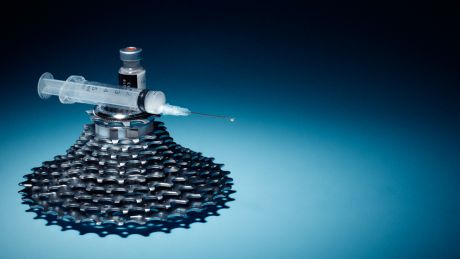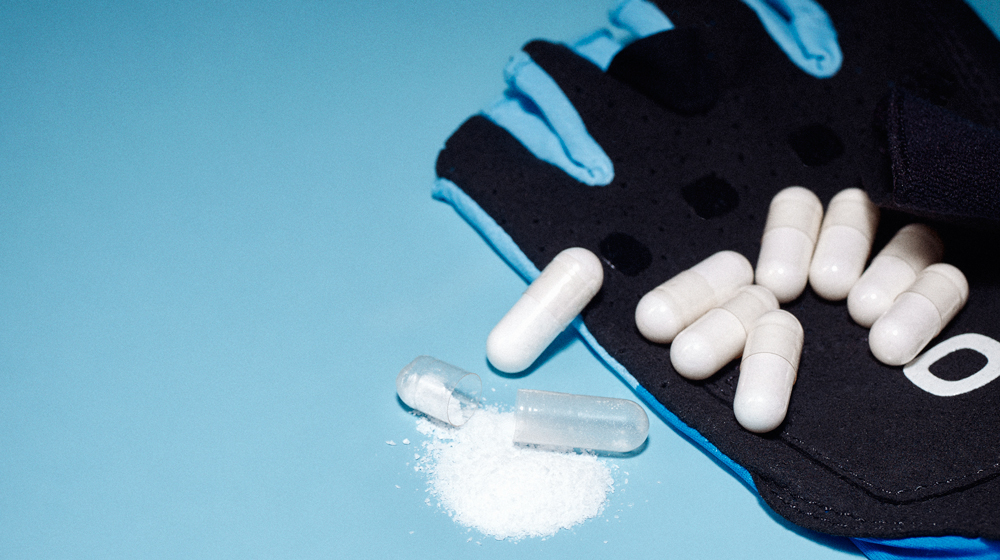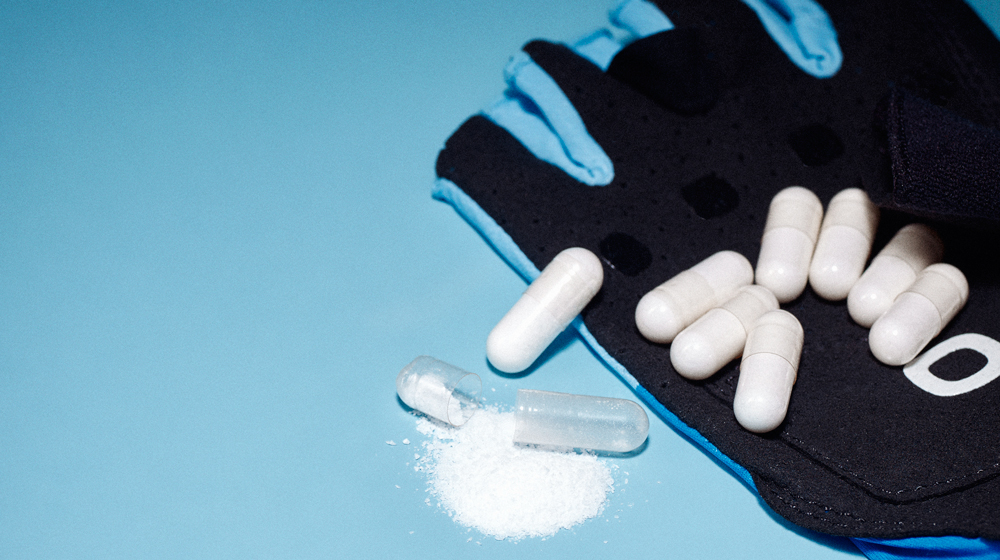Why are Amateur Cyclists Taking Performance-Enhancing Drugs?
More and more amateur cyclists are being caught using PEDs – sometimes risking their health for nothing more than a medal

Imagine you’re at a cycling race. Imagine you’ve signed on at the local town hall and handed over your £5 deposit for a number to stick on your back. Imagine that it’s a time trial, meaning it’s on open roads against the clock, so that everyone gets a result and all ages and abilities can participate. Imagine the prize money for the event is just £40, and there’s a special prize for veteran riders (some of whom are in their 70s) who beat their predicted handicap. It’s an early start, and some of the organisers have arrived early to lay out tea and biscuits, which you can have for an optional donation – £1 is considered customary.
Now imagine that some of the fastest riders in this friendly local competition have used drugs to boost their performance. Imagine they’re the same type of drugs that shamed cyclist Lance Armstrong was banned for using to win seven Tour de France titles. Imagine your surprise.
A shock to the system
At the start of 2016, UK Anti-Doping (UKAD) made public three cases of amateur doping in cycling out of only 44 tests conducted the previous year. That’s nothing in comparison to the numbers of sanctions in other amateur sports (check UKAD’s current sanction list if you want to see the worst offenders), but the news shook the country’s cycling community. Why? While we might expect professional athletes to dope in pursuit of financial gain and glory, all three of these cases were found in a niche field of cycle racing – time trial. More shocking still was that one was a 46-year-old champion in a highly niche, 12-hour super-endurance time trial event, and another was only 17 when he was discovered with EPO, the synthetic hormone pros use to increase their red blood cell count for enhanced endurance.
“I was unbelievably shocked. I couldn’t get my head around it,” says Matt Bottrill, a cycling coach and former national champion in the time trial event. His shock wasn’t only because he had competed in events with dopers, but because winning time trials is no way to get rich. “The rewards are just not worth it,” he says. “I was never going to make a full-time career out of it. I’ve always had to work. I haven’t made thousands of pounds from it.” So why are amateur cyclists turning to performance-enhancing drugs (PEDs)?
The mind of a doper
“The motivation of athletes to dope is a really interesting subject and it’s also really complicated,” says Pat Myhill, director of operations at UK Anti-Doping. He argues that it’s not all about fame and fortune. “Sometimes it’s just about personal achievements, beating your own time,” he says. “Yes, of course it’s about winning, if you can. But sometimes it’s about curiosity.” This, it seems, has often been a dangerous factor in doping.
“A lot of it was curiosity,” said 18-year-old Gabriel Evans in a statement after his ban. He was 17 when he was discovered with a vial of EPO by a team-mate’s father – and he was junior national champion. A similar explanation came from fellow time trial rider Dan Staite, who tested positive for steroids in 2010. He answered his critics on a popular time triallists’ online forum, explaining, “From an experimentation perspective it was worth it. It gave me the data I needed to answer a few questions of ‘what if’.” But “what if”… what?
Staite was too old to turn professional, and even with the drugs he was a country mile off the best in the sport. No matter how far from the elite they are, though, athletes who dope often seem to want to make a step up to the next level of speed and competition, whatever it may be. For Evans, knowing whether he could ever turn his hobby into a profession was surely a motive, and in that regard he certainly wasn’t the first.
Get the Coach Newsletter
Sign up for workout ideas, training advice, reviews of the latest gear and more.

Amateur racer Edwin Readus (not his real name) tested positive for anabolic steroids in his early 20s. Initially he was encouraged to claim it was an aid for his recuperation after an injury but now, a decade after his suspension, he’s more open about what happened. “I used it to boost my performances,” he explains. “I wanted to turn professional. I was adamant [about] turning pro and riding the Tour de France.”
Readus was tantalisingly close to his dream. He had never ridden as a professional but had moved to France to ride with the best, becoming a stagiaire – an amateur riding with a pro team to see if they would be interested in signing him. “That was one of the turning points. I sat down with a pro racing team and they said I needed to get stronger,” he says.
Readus puts no blame on the pressure heaped on him from professional teams. “It was probably pressure that I put on myself that was a big turning point,” he says. “To be so close… it’s the sort of thing you dream of.” As with many cases, Readus felt he’d maximised his opportunities for improvement. “I knew I trained well, I knew I slept well, I knew I ate well. It was about moving to the next level.”
Readus’s desire to go quicker was at the root of his use of drugs, and a big part of the benefit was psychological. “People act as though you become something you never were before, but the differences are subtle,” he says. “On the mental side, though, when you know you’re doing [PEDs] you know you’re the complete cyclist. If you’re [racing against] a rival and you let yourself wonder whether he’s doping and you know you’re not, then you’d let him go.”
Readus takes responsibility for his decision to dope but there’s no doubt that the publicity surrounding doping in professional sport does lead some to believe it’s the only way to get ahead. “The problem is that when we get dopers who are very high-profile athletes, they get an inordinate amount of publicity,” says UKAD’s Myhill. Regardless, he still believes it’s right to make the discussion about doping in sport a public issue.
Supply and demand
What drugs might we expect an amateur cyclist to take? “To start with there was cortisone, testosterone, human growth hormone [hGH], clenbuterol, EPO and so-called super-EPOs like RNF,” Readus says of the period when he was racing. Testosterone, hGH, clenbuterol and EPO (erythropoietin) work on the whole aerobic system. EPO increases the red blood cell count, which means more oxygen can be transported from the lungs to muscles, giving you a more efficient overall system. Clenbuterol, alternatively, is a bronchodilator, which increases the efficiency of the lungs themselves.
For some of the most powerful drugs, the tests were too expensive to conduct at amateur level. “RNF filtered down to the amateurs because there was no test for it in the amateurs, or that’s what they led us to believe,” he says. “The chance of them testing the amateurs for RNF was slim to none.”
The method of taking many of these substances is an intravenous injection. “Certainly in my mind, once the first injection happened, I wasn’t overly bothered about what was going in,” Readus says. Olympic cyclist and former doper David Millar identified the very same phenomenon – vitamin injection became his gateway to drugs. “That is certainly something that I remember: the biggest obstacle was injecting something,” Readus says. “If it was vitamin B12 or EPO – no difference. It seems wrong. We live in a nation where injecting is wrong anyway, we associate it with heroin addicts.”
For endurance athletes, the drugs that were popular ten years ago are still the ones that are popular today. Ultimately EPO is simply perfectly suited to boosting performance. What is different is that in the past the supply network was generally face-to-face; now the internet has changed things significantly.

Download to doping
“I didn’t even know how you could buy it,” says Bottrill. “Apparently you can just go on the net.” Once doping required a complex distribution network, like the one that was exposed in 2006 when a low-tier pro cyclist called Joe Papp admitted to running an illegal private members’ website for buying EPO and hGH. Now, however, there are numerous online outlets for PEDs. It took us less than ten minutes to secure a source of EPO online. As for instruction on how to use it, the internet also provides an abundance of information.
“I dealt with a case in which some teenage athletes who bought substances online went to their local chemist shop and bought needles and syringes, and they learned how to [administer the drugs] by watching a YouTube video,” Myhill says. “There’s very little that we can do to stop that.” Numerous forums also provide a platform for advanced discussion of PED use. One, Eroids.com, puts potential consumers together with suppliers as well as offering information on dosages and loading cycles.
It’s clear that many dopers have developed an advanced medical knowledge of PEDs, and speak openly about it. Although the majority of users are bodybuilders and gym-goers, some endurance users on Eroids.com even discuss complex methods of avoiding a positive test. Don’t be fooled into thinking everything you read online is true, though. Readus found that a lot of the advice about dosages and detection he received (from other riders rather than the internet) was incorrect, meaning some athletes failed drugs tests despite all their efforts.
The problem both then and now is that when buying through the black market you can never be sure what you’re getting, even if it does come in a fancy packet. “Particularly at amateur sports, the substances they will use come from illicit labs through online suppliers and the health implications of that are significant,” explains Myhill. “These substances are not made in pristine laboratories, immaculately clean premises where people wear white gowns. Quite often they’re made by amateur chemists mixing in their bathtubs. And the substances they buy may not be what they think they are. They may actually contain substances in greater or lesser quantities than they thought. The health risks for them are huge.”
Health isn’t just an issue for poorly made drugs either – even “legitimate” PEDs are often lethal by nature. Popular steroids such as GW501516 have been studied and found to have strong causal links to cancer. Between 2003 and 2004 alone, seven European cyclists died because EPO thickened their blood so much that their hearts stopped, most in their sleep.
Finding the answer
So is there a solution? UKAD is keen to stress that testing is expensive and its funds can only go so far. “We run our testing programme on an intelligence-led basis,” Myhill admits. Essentially UKAD acts on tip-offs, much like law enforcement, with forums and websites selling drugs are a primary source for finding potential offenders. But, of course, its remit goes far beyond cycling and the other sports that have traditionally been plagued by PED use. An independent anonymous survey at the Ironman Frankfurt triathlon event, for instance, found that 20% of competitors said they had doped for the event. Ironman is only now catching up with its own anti-doping programme.
Ultimately, the nature of sport is such that some competitors will always strive to take advantages where they can. In fact, we’re all guilty of squeezing the rules where we can, says Readus. “Do you drive the whole way into work at the speed limit? I’m not trying to justify what I’ve done, but unless you’ve been in the middle of it, you can’t understand it.” Perhaps, then, just like speed cameras on the roads, organisations that run sporting events will have to put measures in place – regardless of cost – to dissuade athletes from doping, make sure they aren’t doping, and enable them to race believing that they don’t have to. As Bottrill puts it, “Obviously it costs a lot for testing and education. But I would be prepared to pay a bit more knowing that I was racing in a clean sport.”
If you have any suspicions about doping in a sport that you participate in, visit reportdoping.com
Do’s and Dope
The most popular PEDs by number of suspensions – and why they’re best avoided
RECOMMENDED: The Most Popular Steroids For Sale in the UK and Why You Should Avoid Them
EPO
The cyclists’ favourite, erythropoietin has caused nearly three times as many bans as the next most popular PED. Lance Armstrong called EPO “the 10%-er” and a drug that you simply had to take. It increases the flow of red blood cells and oxygen to the muscles for more power and energy.
BUT You may well die from heart failure, as was the case for seven cyclists under 35 in 2003-2004.
Testosterone
A steroid that occurs naturally in the body and encourages bigger, stronger muscles. Injecting more of it increases the effect.
BUT It causes possible acne, breathing problems and swelling of the ankles. It can also thicken the blood and create dangerous blood clots.
RECOMMENDED: How to Boost Your Testosterone Levels the Natural Way
Human growth hormone
Another hormone present in the body, and boosting your levels artificially encourages faster muscle growth and recuperation. It has been used as an anti-ageing solution.
BUT Research suggests it raises risk of diabetes, joint degradation and Hodgkin’s lymphoma (cancer of the lymphatic cells, part of the circulatory system).
Corticosteroids
Different from anabolic steroids, these aid the production of glucose, cause quicker release of fatty acids and reduce general inflammation, meaning they reduce injury and illness in training.
BUT The list of side effects is long, but includes mental conditions such as anxiety and depression, as well as gastrointestinal illnesses like colitis.
Amphetamine
The daddy of all stimulants, amphetamine supercharges the nervous system and increases stamina, alertness while reducing fatigue and pain.
BUT The likely killer of British cycling legend Tom Simpson in 1967, amphetamine can cause cardiac arrhythmia and heart attacks.
Nandrolone
An anabolic steroid – the muscle-growing, strength-increasing variety. Nandrolone can help you push your body harder while increasing the muscle growth that results from repairing fibres after training.
BUT Erectile dysfunction and cardiovascular damage should be enough to put most people off, but if you’re still tempted, Google the dozens of other side effects.
Source: Dopeology.org
